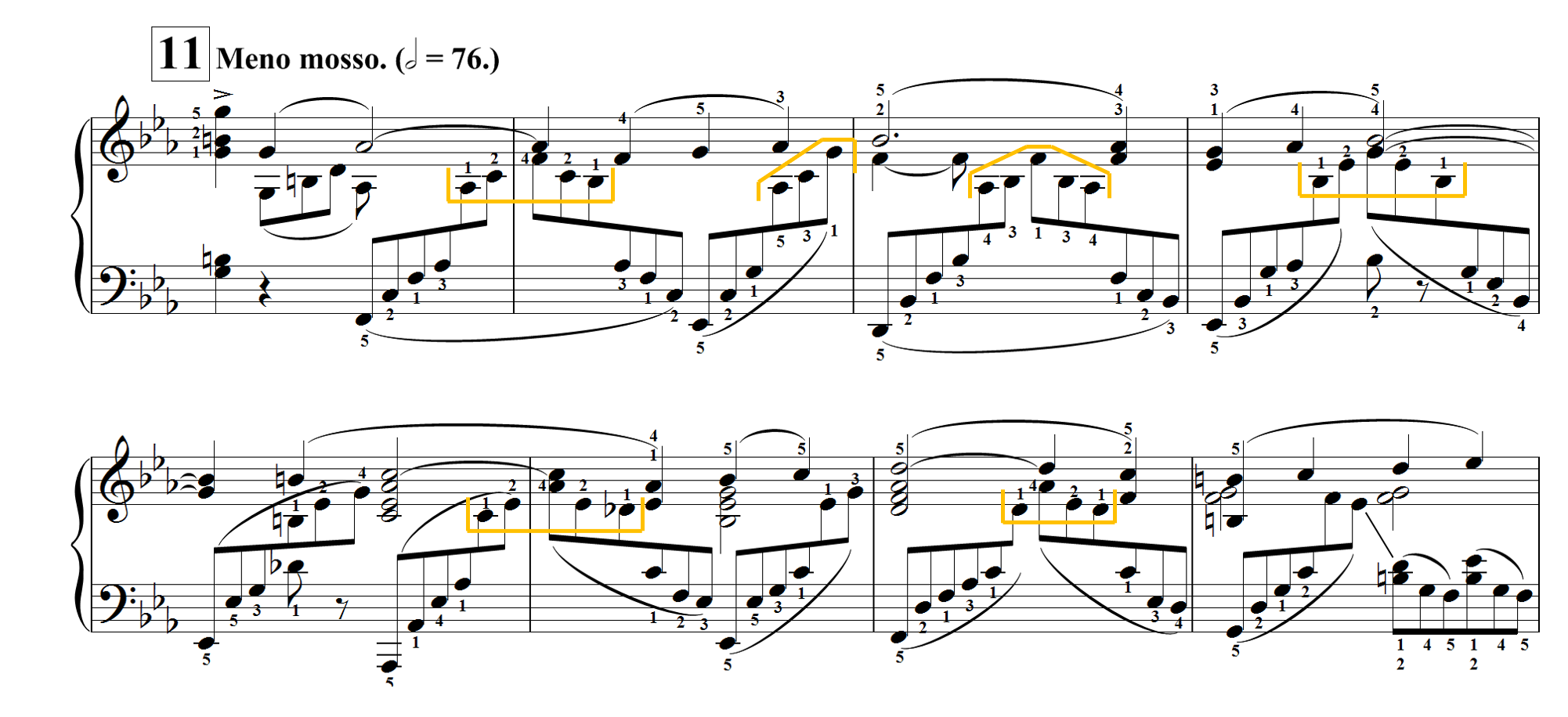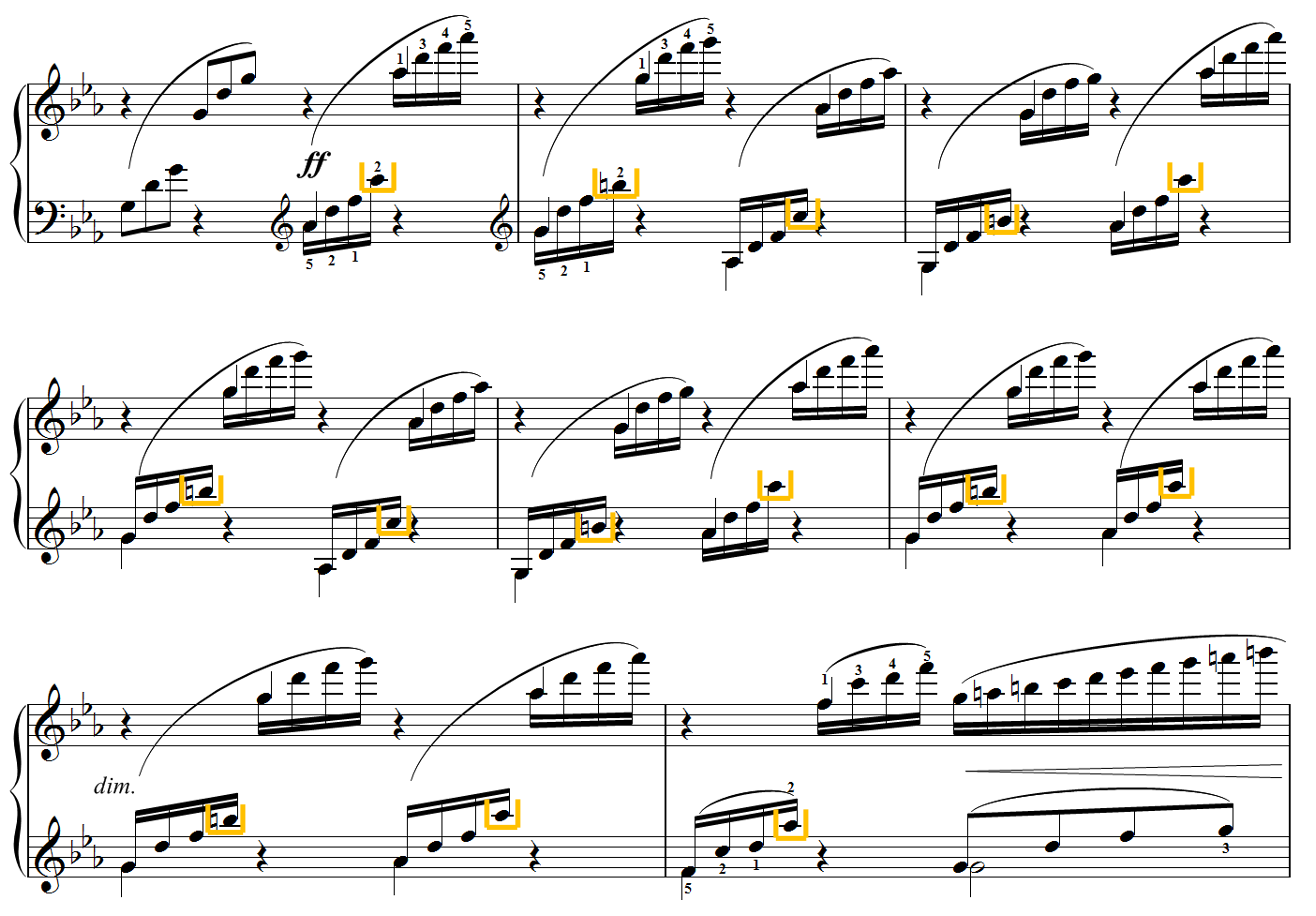Submitted by Josh Condon
Published on 6/13/2020

Submitted by Josh Condon
Published on 6/13/2020

“The left-hand thumb catches the downbeat of beat 4 every time this figure is played.”
Submitted by Josh Condon
Published on 6/13/2020

“Unlike the solo tone you want to get at Rehearsal 3 by playing the melody with just one hand and all of the accompaniment in the left, here the harmony forces the right hand to play more and then is in position to play MORE of the accompaniment figures.”
Submitted by Josh Condon
Published on 6/12/2020

“I catch the top octave in the right hand, and hands are reversed. EXCELLENT because of the awkwardness in the following triplets.”
Submitted by Josh Condon
Published on 6/13/2020

“These excerpt employs an important small left-hand catch in order to keep the strongest fingers playing the fast passage work and avoid a stretch that would have been slightly awkward with my hand size at that very fast tempo.”
Submitted by Josh Condon
Published on 6/7/20

Submitted by Josh Condon
Published on 6/7/2020

“I couldn’t reach these left-hand groups at lightning speed so my right hand had to catch the final sixteenth notes with 2.”
Submitted by Josh Condon
Published on 6/7/2020

Submitted by Josh Condon
Published on 6/7/2020

“This is an easy change because the right hand is already playing octaves and the left hand has awkward material at this crazy fast tempo.”
Submitted by Josh Condon
Published on 6/7/2020

“I alternate fingers 4 and 3 in the second measure to prevent kinetic confusion.”
Submitted by Seolyeong Jeong
Published on 8/23/2021

“I start every left-hand fingering group with 1 to prevent confusion.”
Submitted by Seolyeong Jeong
Published on 8/23/2021

“The unusual two-over-thumb (thumb on a black key) secures the upper third (a, c#), especially for people without very large hands or with a short pinky.”
Submitted by Jörg Winter
Published on April 27, 2023

“Playing as written makes the hands crowded. This distribution prevents that.”
Submitted by Michael Lenahan
Published on 6/7/2020

“The fingering Rachmaninoff gives requires tricky double thumbs in the right hand. I find it easier to take those notes in the left hand creating a repeated note in the left hand. The fingering in last measure of this passage removes the awkward ninths in each hand.”
Submitted by Michael Lenahan
Published on 5/25/2020
Fingerings in Italics are Rachmaninoff’s.

“I chose these fingerings to correspond to the musical phrase/accents.”
Submitted by Seolyeong Jeong
Published on 8/23/2021

“The first redistribution simplifies a repeated note; the second one alleviates an awkward stretch in the right hand.”
Submitted by Michael Lenahan
Published on 5/25/2020

“While what Rachmaninoff wrote isn't particularly difficult, I find playing alternating thirds between the hands is more effortless and it comes out more articulate. It's a good way to get this nasty section off on the right foot.”
Submitted by Michael Lenahan
Published on 5/25/2020

“By taking the B and the A with the thumb in the left hand, this makes the right hand simpler.”
Submitted by Michael Lenahan
Published on 5/25/2020